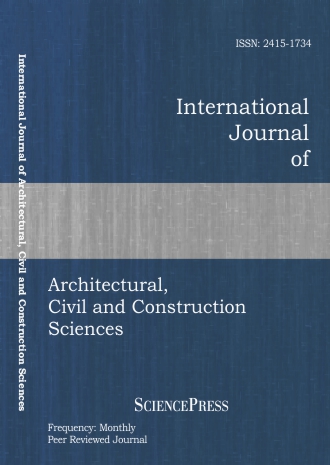
Scholarly
Volume:12, Issue: 9, 2018 Page No: 810 - 820
International Journal of Architectural, Civil and Construction Sciences
ISSN: 2415-1734
Finite Element Analysis of Raft Foundation on Various Soil Types under Earthquake Loading
The design of shallow foundations to withstand different dynamic loads has given considerable attention in recent years. Dynamic loads may be due to the earthquakes, pile driving, blasting, water waves, and machine vibrations. But, predicting the behavior of shallow foundations during earthquakes remains a difficult task for geotechnical engineers. A database for dynamic and static parameters for different soils in seismic active zones in Iraq is prepared which has been collected from geophysical and geotechnical investigation works. Then, analysis of a typical 3-D soil-raft foundation system under earthquake loading is carried out using the database. And a parametric study has been carried out taking into consideration the influence of some parameters on the dynamic behavior of the raft foundation, such as raft stiffness, damping ratio as well as the influence of the earthquake acceleration-time records. The results of the parametric study show that the settlement caused by the earthquake can be decreased by about 72% with increasing the thickness from 0.5 m to 1.5 m. But, it has been noticed that reduction in the maximum bending moment by about 82% was predicted by decreasing the raft thickness from 1.5 m to 0.5 m in all sites model. Also, it has been observed that the maximum lateral displacement, the maximum vertical settlement and the maximum bending moment for damping ratio 0% is about 14%, 20%, and 18% higher than that for damping ratio 7.5%, respectively for all sites model.